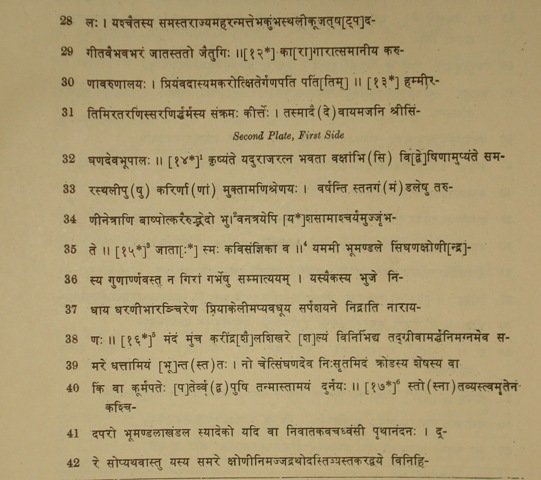|
EPIGRAPHIA INDICA

___________________________________________
[1] The first foot of the stanza exhibits Kēvalaparamparita-rūpaka not based on pun. The superimposition
of timira on Hammira leads to that of taraṇi on the king. There is also Mālā-rūpaka as taraṇi and sankrama
are upamānas to the same Siṅghaṇa.
[2] The daṇḍa is unnecessary.
[3] The heroic deeds of Siṅghaṇa are compared with those of a farmer. The second and fourth feet of the verse
jointly offer Asaṅgati inasmuch as the cause (i. e. sowing) is in one place and the effect (i. e. crops) in another.
[Three causes of the same effect are given in the first three feet.─ Ed.]
[4] The two daṇḍas are unnecessary.
[5] The second foot of the stanza exhibits Adhika as guṇ-ārṇava (the āśrayin) is described as greater than speech
(the āśraya) though really it is not so.
[6] Siṅghaṇa, the champion archer, is requested here to discharge his shaft at the enemy’s]
elephant not with full swing. For the full force of the shaft will not only kill the elephant, but, says
the poet with a hyperbole, also pierce the earth to the base and fall on the Boar (Vishṇu) or Śēsha or the
Tortoise (i.e. the mythological supporters of the earth). And would this not be an outrage ?
|